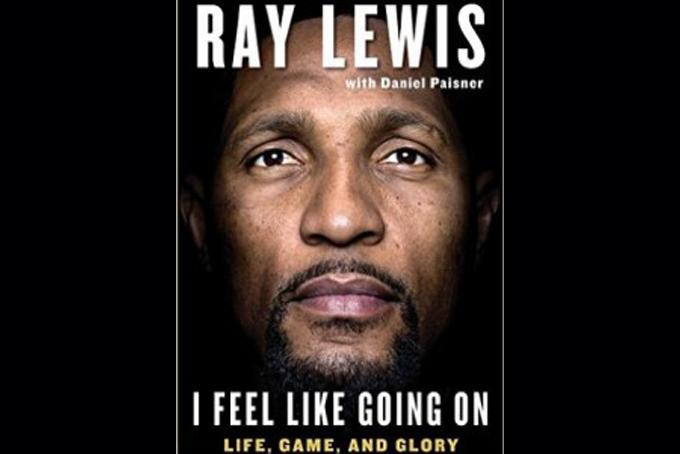
In ‘I Feel Like Going On: Life, Game, and Glory’ Ray Lewis tells the story of his 17 year NFL career.
Let me preface this review by saying that I am born and raised in Baltimore City. Growing up with no football team sucked and the only thing worse were the old stories of how great the Colts were before they moved to Indianapolis in the middle of the night.
To me, the greatest day in Baltimore City’s football history is April 20, 1996. That was the first draft for the new Baltimore Ravens and in that first round General Manager Ozzie Newsome selected Hall of Famer Jonathan Ogden from UCLA with the 4th overall pick, and future Hall of Fame inductee Ray Lewis from Miami, with the 26th pick. Ogden and Lewis would lead the team to win Superbowl XXXV in 2001 and Lewis would again win in 2013. That win, at Super Bowl XLVII, would be Lewis’ final game.
That game and detailed memories of many others, make up a good portion of this book. In addition, Lewis discusses his early childhood, growing up without a father and even the origin of his name–he was named after a military man who paid his mother’s maternity ward bills. He remembers growing up in a house with his single mother, Sunseria Smith, and his four siblings. He also remembers the abuse he and his mother suffered at the hands of men in her life.
Lewis talks about his introduction to football, his evolution to a blue chip recruit in high school and his ascension to wrestling state champion in his senior year. The part of the book many non-Ravens fans will be interested in is Lewis’ detailed retelling of what happened on Jan. 31, 2000 in Atlanta.
On that night Jacinth Baker and Richard Lollar were stabbed to death following the Super Bowl. Lewis and his group had been involved in a fight with another group of which Baker and Lollar were a part of. Lewis and two companions were charged with murder and Lewis ultimately took a plea and testified against his two companions. Lewis never directly linked his two friends to the killings, and they were acquitted.
Lewis goes through the different outfits he wore, his trip to Atlanta and expresses multiple times that he has moved past the events, how people treated him and how he felt. It seems that Lewis is still hurt by those accusations and how he was treated, in custody and in public, as a result of them.
Lewis does touch on the Baltimore unrest and seeing “his city” burn. He talks about his hurt as he watched the city explode in riots and violence and how he showed up to help in any way he could.
Faith is the common thread that ties this book and Lewis’s life together. The book is a mixture of Lewis’s spiritual talk, motivational speeches and his football history. For this football fan, that’s more than enough.
– See more at: https://afro.com/ray-lewis-book-takes-an-in-depth-look-at-the-man-beneath-the-helmet/#sthash.Mw8U5a8I.dpuf
